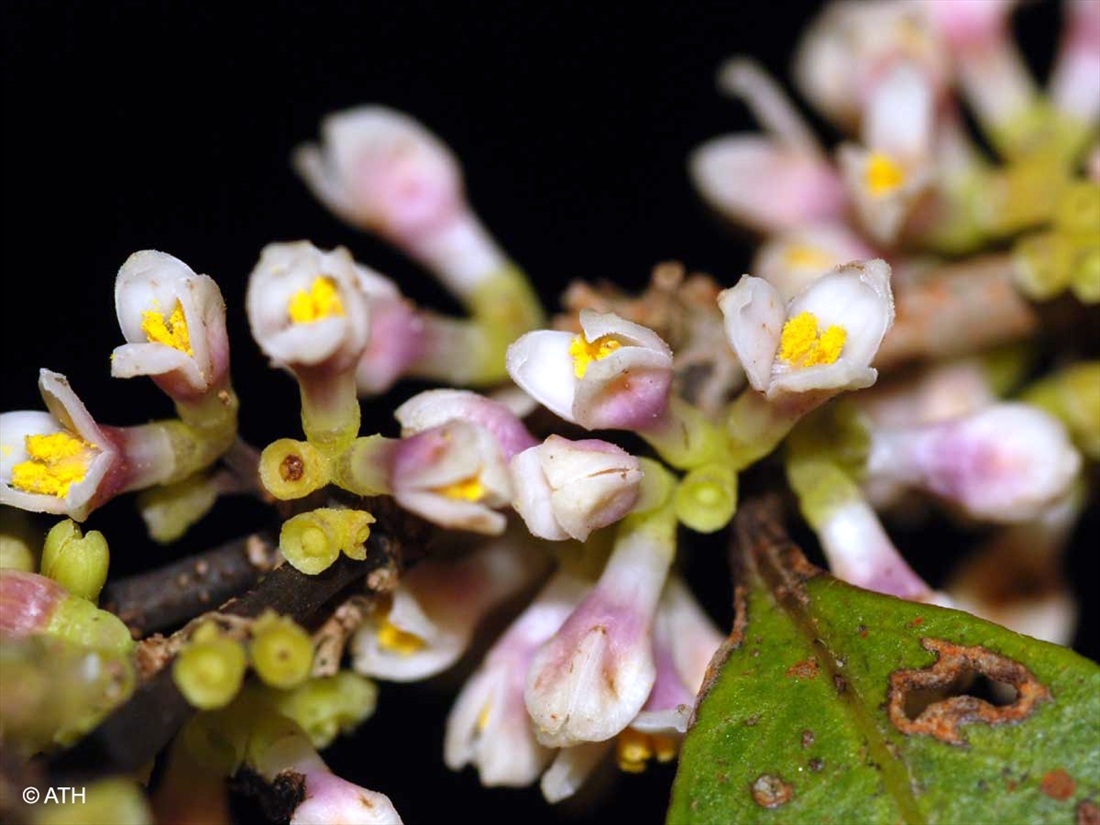Australian Tropical Rainforest Plants - Online edition
Gynochthodes constipata (Halford & A.J.Ford) Razafim. & B.Bremer
Razafimandimbison, S.G. & Bremer, B. (2011) Adansonia 33(2): 289.
Slender twining vine to 7 m high, stems 7 mm diam. Branchlets rounded, glabrous.
Leaves petiolate, opposite. Stipules interpetiolar, sheathing, 2-3 mm long, produced into a narrow triangular lobe, glabrous, fragmenting as node thickens. Petioles 3-7 mm long. Blades thin, narrow elliptic, 6-9.5 x 1.5-3.5 cm, glabrous, 5-7 lateral veins per side of midvein. Midvein raised on upper surface. Leaf apex acuminate, base obtuse to acute. Tuft domatia present in lateral vein axils on lower leaf surface
Flowers 3-4 merous, bisexual or unisexual (male only), sessile, in 2 or 3-flowered heads (capitula). Heads with peduncles 1-3 mm long, in axillary or terminal clusters. Calyx tube truncate, 0.4-0.6 x 1.6-1.7 mm., green, glabrous. Corolla purplish towards base, otherwise white, glabrous, falling; tube 1-8-3 mm long; lobes 2.2-3.5 x 1.7-2.4 mm; anthers exserted from corolla tube.
Not known.
Endemic to NEQ where it is known from three localities on the Bellenden Ker Range and headwaters on the Russell River. Altitudinal range from 590 to 1560 m, though records occur above 1460 m. Mainly grows in microphyll-notophyll vine fern thickets on granite substrate, but in the Russell River grows in complex notophyll rainforest on soil derived from mudstones.
Morinda constipata Halford & A.J.Ford , Austrobaileya 8(1): 82 (2009). Type: Queensland. Cook District: National Park Reserve 904, Wooroonooran, just S of tower 9, Mt Bellenden Ker cableway, 17 October 2003, A. Ford AF4184 & J. Holmes. Morinda sp. Bellenden Ker (W.Cooper 1526) .








